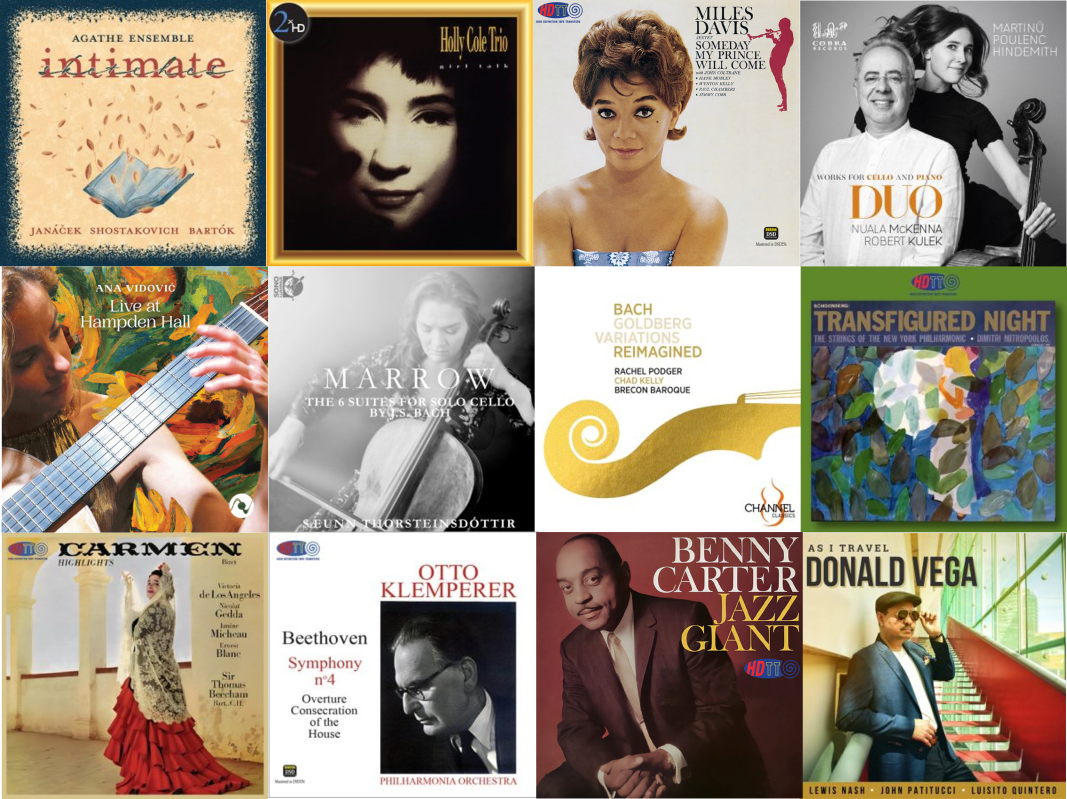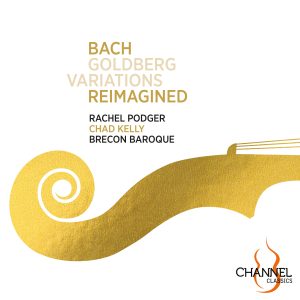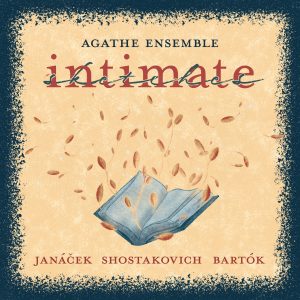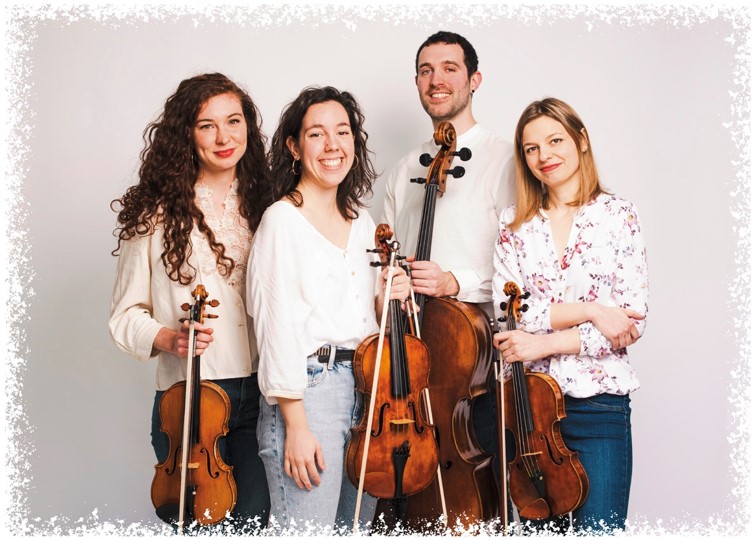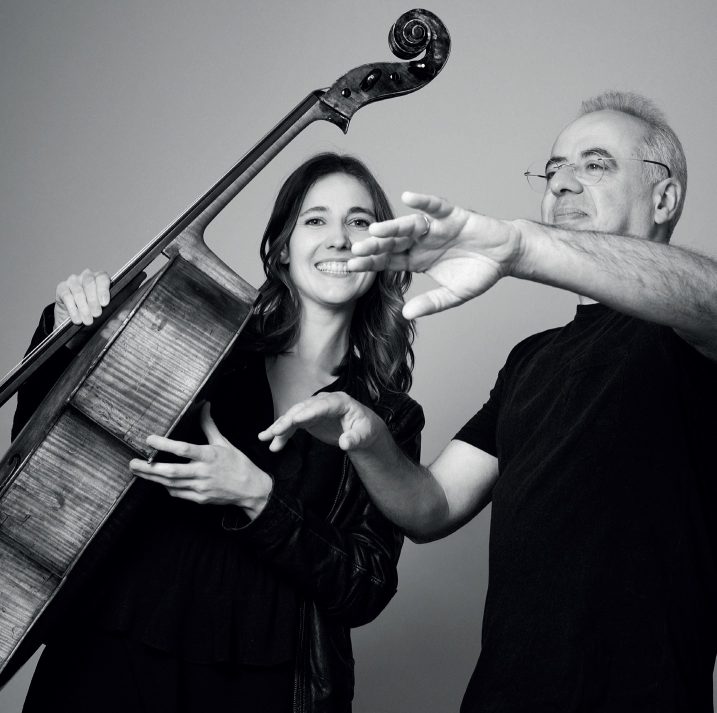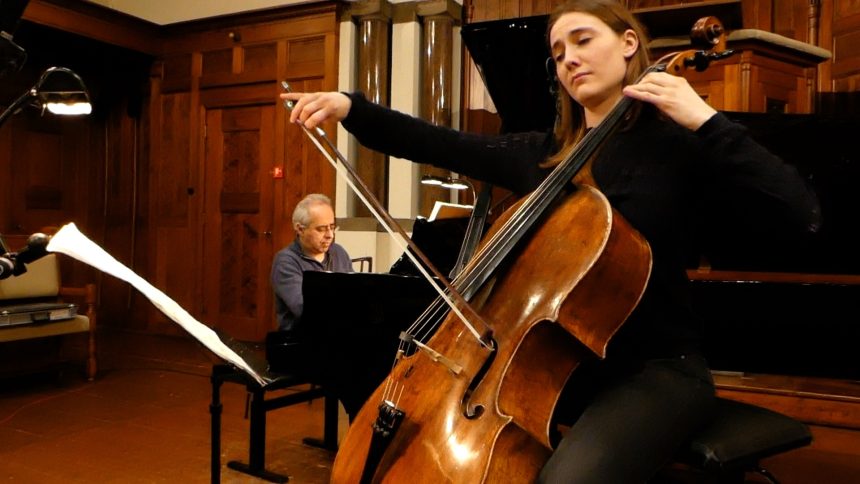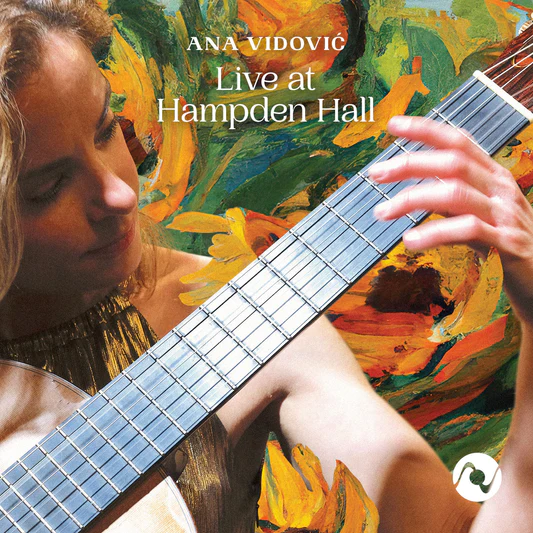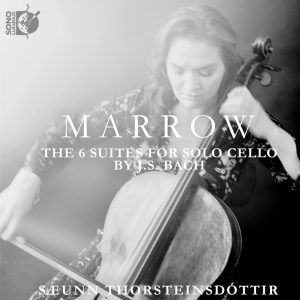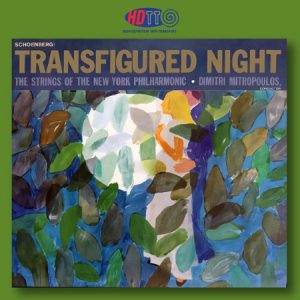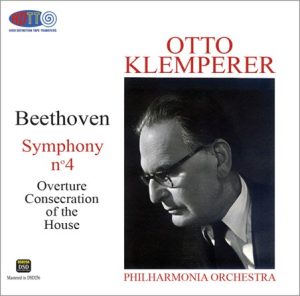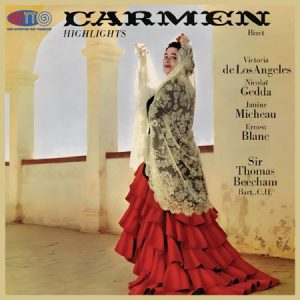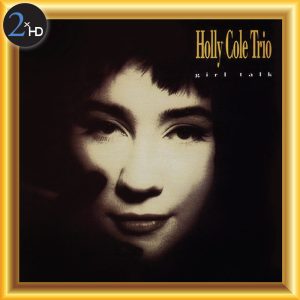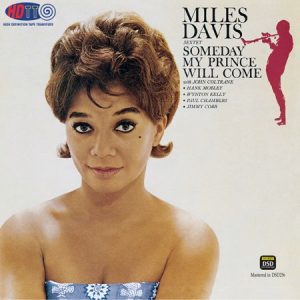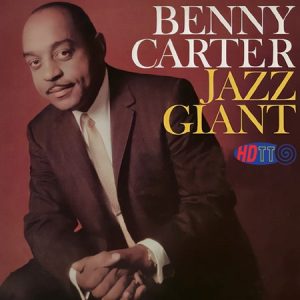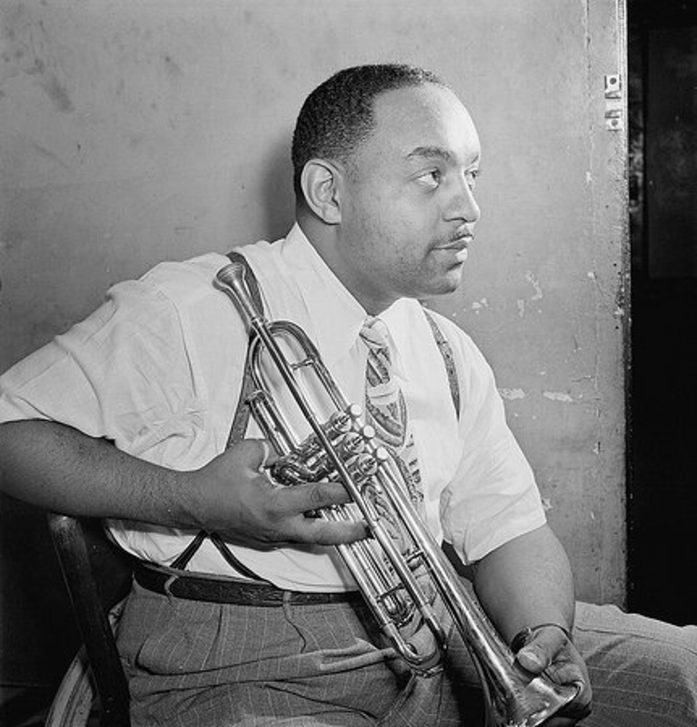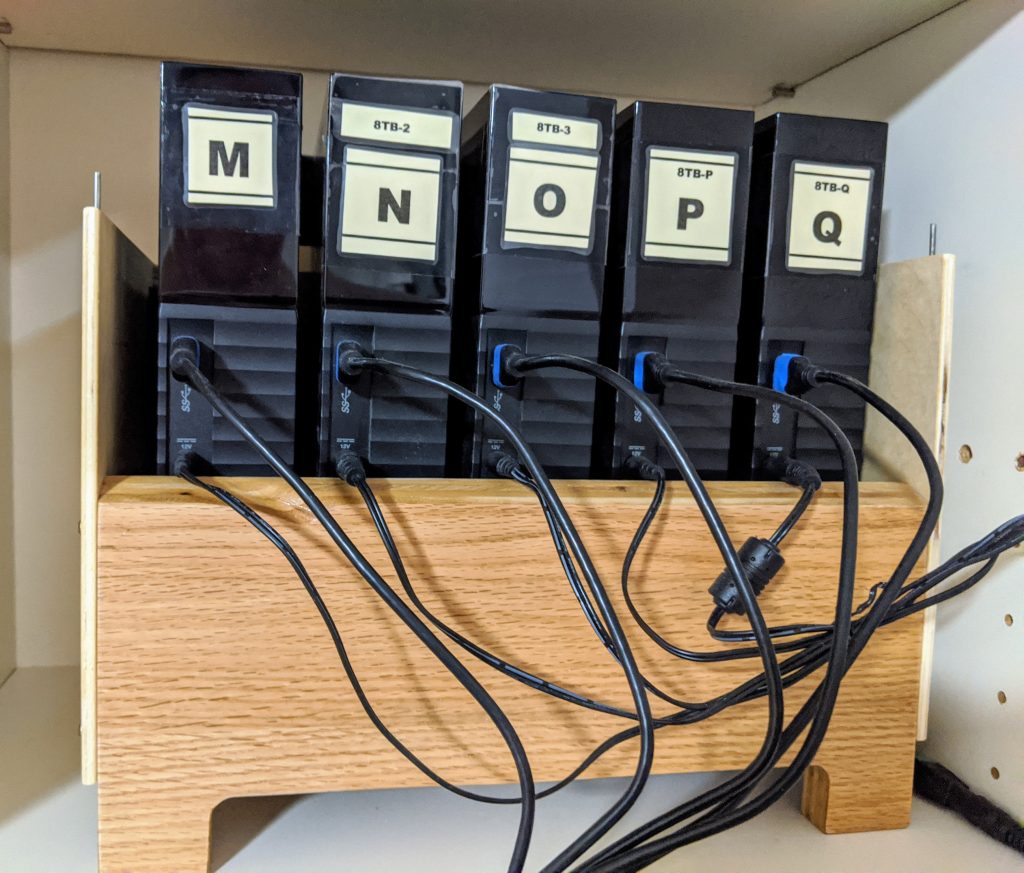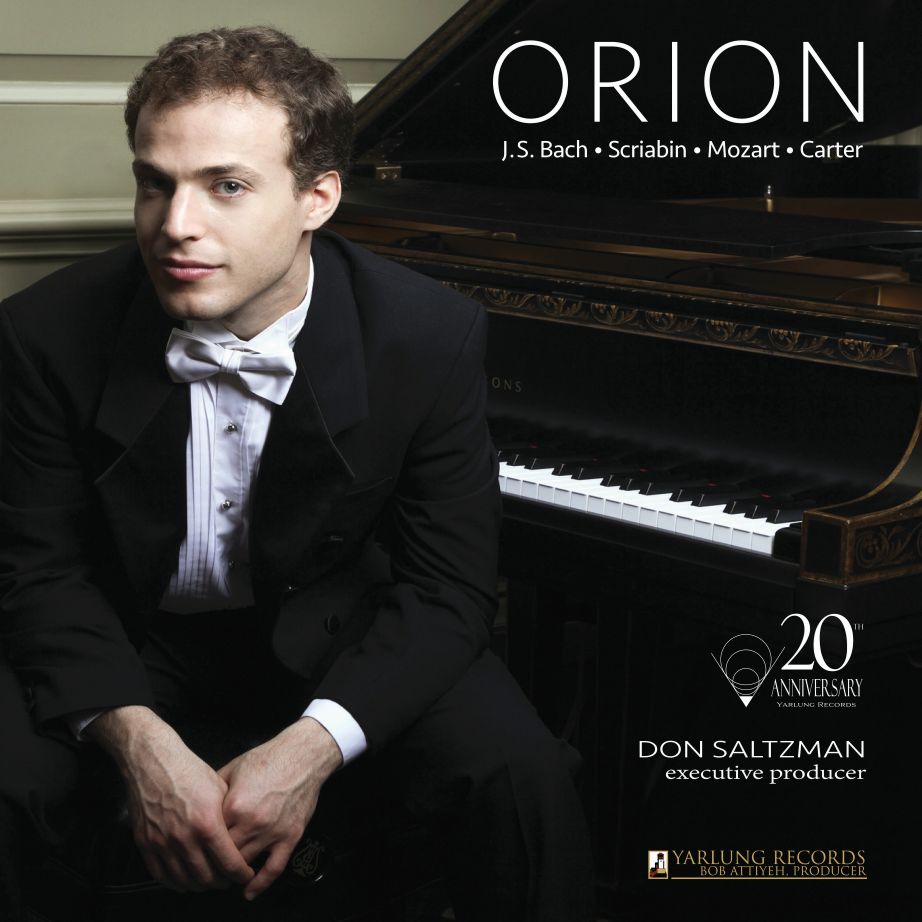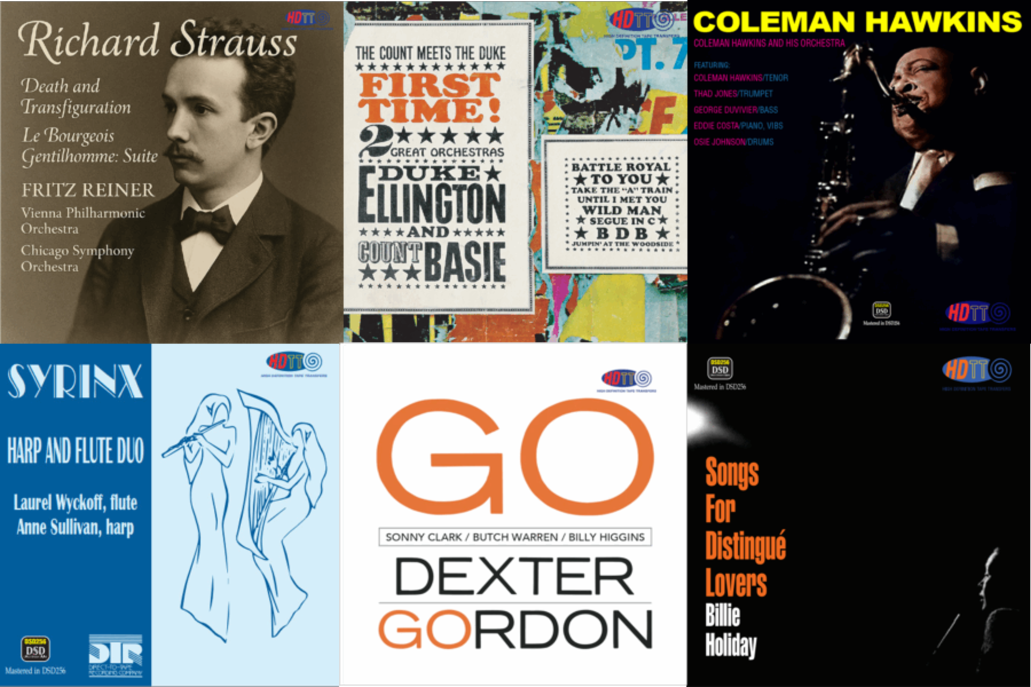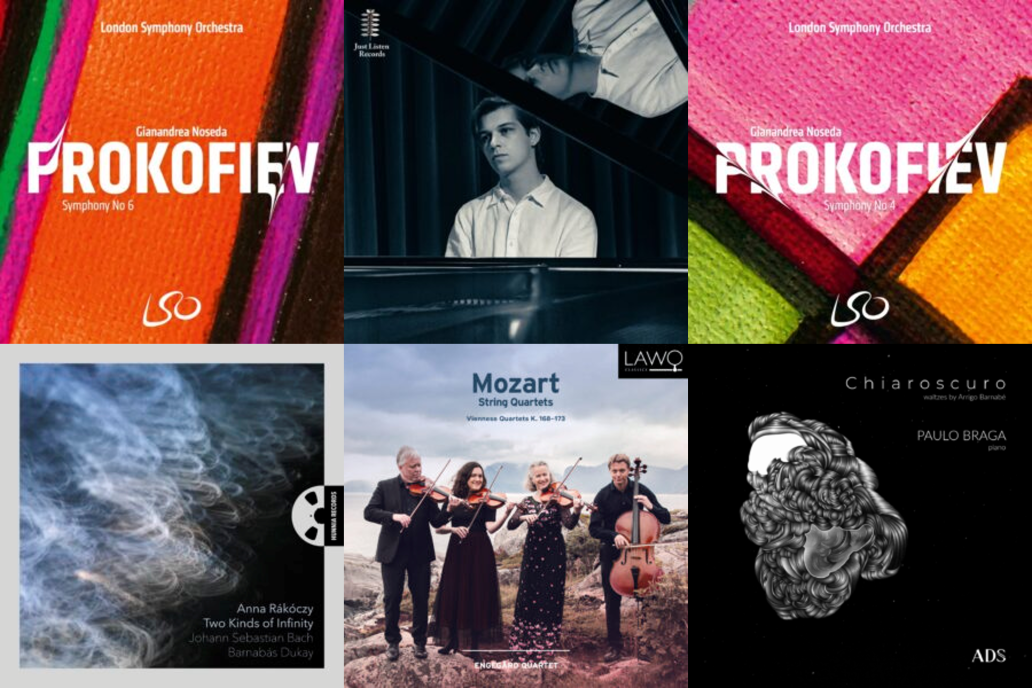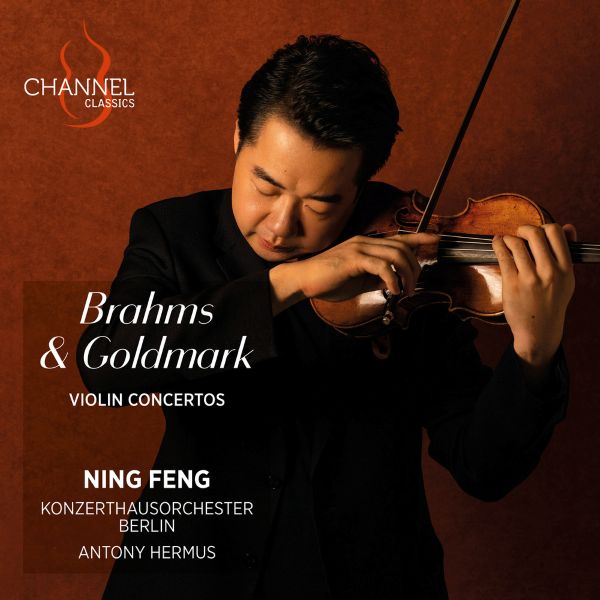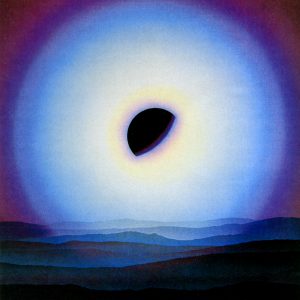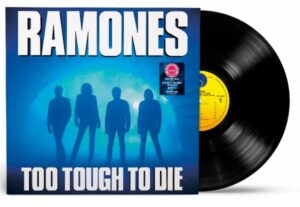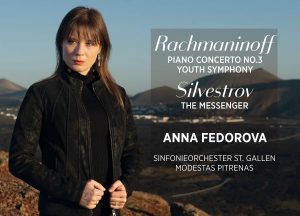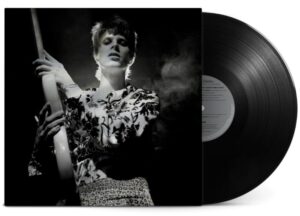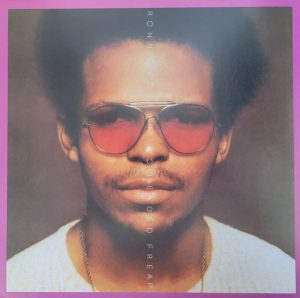I've been scattered about in my listening recently, shifting from classical to jazz to pop. But I've found some gems to share with you in this edition of Recent Finds. Leading off are some exceptional classical music albums released in 2023 and applying some of the best high resolution digital recording technology available. Complementing these are some albums from the Golden Age of Stereo recorded to analog tape in the late 1950s and very early 1960s and then transferred by High Definition Tape Transfer (HDTT) to high resolution digital giving us some of the best sound in which these recordings have been available for us to hear in our home systems.
Bach Goldberg Variations Reimagined, Rachel Podger and Brecon Baroque. Channel Classics 2023 (32bit, DXD256) HERE
What if Bach had written his Goldberg Variations for an ensemble as he did in his Brandenburg Concertos? Well, here is a very credible performance of what might have emerged. In first thought, I was skeptical of the outcome. But it only took 15 seconds for this reimagining of the Goldberg to completely pull me in—hook, line and sinker I went. Of course, that this was Rachel Podger at the helm of her Brecon Baroque colleagues certainly encouraged the adventure.
Arranged Chad Kelly, this reimagining preserves the integrity of this intricate composition while adding color and texture with the ensemble of single strings, oboe, flute, bassoon and harpsichord. What delighted me is that the additional instruments do not overwhelm the work. It remains intimate and supple, now with just a bit more color and texture. And the performers are, as always, just excellent—technically proficient, perfect ensemble, delightful inflection and phrasing. All is entirely consistent with what I've come to expect with every performance from Rachel Podger and her compatriots.
In the very interesting article for the enclosed booklet, arranger and harpsichordist Chad Kelly writes that, at of the publishing of this work in the early 1640s, "Bach had endured over a decade of professional and personal hardship. By 1730, the honeymoon period of his musical tenure at Leipzig had well and truly ceased... In 1737, the composer and theorist Johann Adolf Scheibe issued an article in his prominent Hamburg publication criticizing Bach's music as excessively complex and of unnatural artifice...there was a new musical aesthetic in Europe, and it was not Bach's..."
Within this milieu Bach composed Goldberg, a work that opens with a clear nod to the new Galant style that was then sweeping Europe. But this is J.S. Bach, the stubborn genius confident in his own merit as a composer. To wit, "directly in juxtaposition, however, are a set of nine canons of the utmost cerebral craft. He seems to have accepted a Janus-like view of where he was standing in musical history: one foot entrenched in the past, and the other stepping out towards the future. More than a mere rebuttal, it was a true réunion des Goûts."—Chad Kelly
Brilliance! What we experience is an outpouring of beauty and creativity for which it is hard to find equal.
Chad Kelly's arrangement or "reimaging" works to retain and complement this creativity. And in this I think he very largely succeeds. Kelly writes, "I was keen that this arrangement would in some way reflect a broad sphere of influence. When I considered how best to use the instruments in each Variation, I was reminded of a quote from the late, great, historical wind player and musicologist Bruce Haynes, who believed that, 'Bach valued the distinctive qualities of each instrument and wrote with friendship and affection for all of them.' "
For some further insight into the thought of Kelly and Podger in striving to authentically reimagine this work, you may find the following conversation of interest:
And the sound quality?
Oh, need you even ask knowing that Jared Sacks has engineered this recording? (See earlier interview HERE.) He delivers yet another masterful recording. Again, we get spoiled by the excellence of the results he and Rachel Podger accomplish together.
I am listening to the 32-bit 352.8kHz release, which is as close to the final edit master file as it is possible to get in our home listening. Jared laid down the tracks in DSD256 but final editing and mastering required moving those files to PCM. NativeDSD has then released that final 32-bit file for us to download. On my primary audio system, the 32-bit file sounds just ever so slightly better than the published DSD256 which is derived from this PCM master. It's as close to the sound of the DSD256 tracking channels as we can get. (Keep in mind that your system may process digital files differently. And with different DACs, the supplied DSD256 file may sound better for you just as it does for us on our second system with a different DAC.)
Intimate, music of Janáček, Shostakovich and Bartók, Agathe Ensemble. Cobra Records 2023 (32bit, DSD256, stereo only) HERE
This is the debut recording for the string quartet, Agathe Ensemble. And a nice introduction it is! The original versions of the works included here are all piano miniatures by Janáček, Bartók and Shostakovich. They are reinterpreted on string quartet and duo by the members of Agathe Ensemble. And as interpreted with strings, these pieces flow along some delightfully different pathways.
The album opens gently, tunefully, with Three Moravian Folk Dances by Leos Janáček (1854 - 1928), and then moves into a series of fleeting, ephemeral Janáček pieces under the overall title Intimate Sketches—works so subtle that it seems almost as if we were not meant to ever hear them. They indeed sound "intimate" in the sense of the title of this album, each a flavor-filled morsel to savor.
We next move to works by Shostakovich that are intimate in a very different way, his 24 Preludes (numbers 6-24, but not 1-5) as interpreted for violin and cello. I have been particularly engaged by the performances of these Preludes. The arrangements retain the piquant astringency of the original, and the cellist and violinist perform them with all of the sly humor that should appear. Written by the 26-year-old Shostakovich between 1932 and 1933, the Preludes were premiered in Moscow by Shostakovich himself in May of 1933. Soon after having been published, violinist Dmitri Tsyganov transcribed 19 of the Preludes for violin and piano, to which Shostakovich stated: "When I hear the transcriptions, I forget that I actually composed the Preludes for piano. They sound so violinistic." Here, for violin and cello, they truly sound like they were written for these instruments.
From the Shostakovich Preludes the ensemble smoothly reforms as a quartet to roll into three Hungarian Dances by Bartók. Compact, idiomatic, characterful, and rather sweet, these lovely dances are among the many melodies Bartók collected during his now well known 1907 two-month expedition to Csík County, Transylvania, in what was then a part of the Kingdom of Hungary. While the dances a sweet and lovely, the concluding work by Bartók, Allegro Barbaro, is anything but sweet. It is sharp, angular, angry. The title reflects the composer's reaction to being called a barbarian in the French press. I would become one of his most famous compositions, and the composer often used it as a closer or an encore at his own recitals. A nice finishing touch to this recital!
The Agathe Ensemble perform with a commitment and pleasure in their music-making that is infectious. This is a recital to which we have been invited to share a couch and listen it. There is nothing stiff and formal—it is a relaxed, occasionally playful, and intimate (there's that word again!) affair throughout. Thoroughly enjoyable and to be enjoyed!
For a preview of the Agathe Ensemble performing some of this music, here's a link to a YouTube video they created:
And a closing word about the sound quality: GORGEOUS!
Yes, the remarkable Tom Peeters (see interview HERE) has once again captured the music-making of these performers in such an acoustically natural and relaxed way that I am completely sucked in by the sound quality. The timbre of the instruments sounds just spot on, the open natural reverberation of the church in which these pieces were recorded is captured with just the right balance of direct and reflected sound. I feel right at home sitting in with the musicians, it is as if this was a recital being performed just for me. Chamber music at its best!
I am listening to the 32-bit 352.8kHz release, which is as close to the final edit master file as it is possible to get in our home listening. Tom laid down the tracks in DSD256 but final editing and mastering required moving those files to PCM. NativeDSD has then released that final 32-bit file for us to download. On my primary audio system, the 32-bit file sounds just ever so slightly better than the published DSD256 which is derived from this PCM master. It's as close to the sound of the DSD256 tracking channels as we can get. (Keep in mind that your system may process digital files differently. And with different DACs, the supplied DSD256 file may sound better for you just as it does for us on our second system with a different DAC.)
Agathe Ensemble
DUO, works for cello and piano by Martinů, Poulenc and Hindemith, Nuala McKenna, Robert Kulek. Cobra Records 2023 (DSD256, DXD, binaural, stereo and multi-channel) HERE
This is Nuala McKenna's second album with Cobra Records and I've been looking forward to another album from her since her 2021 release of Solo: Kodaly, Ligeti and Britten (HERE) in which it was clear that she had the talent and technical chops to create many more excellent recordings. This album of works by Martinů, Poulenc and Hindemith is an excellent return to the recording studio for her as she very successfully takes on three challenging 20th century works for cello and piano. What an utter delight!
Of course, any duo is a partnership and she is excellently matched with American pianist Robert Kulek. In recordings of music such of this, it is really enjoyable to hear musicians in equal partnership. Sometimes supporting, sometimes taking the lead, but always collaborative. This is the partnership I'm hearing in these performances. Of the recording, Nuala writes, "Our recording took place in the Westvestkerk in Schiedam, an hour's drive from Amsterdam and a much loved location for recordings due to its remarkable Steinway grand piano, wooden interior and good coffee machine. We spent four days driving back and forth between Amsterdam and Schiedam, having to get up early and returning late in the evening, the journeys enlivened by swapping anecdotes, telling each other jokes and the occasional hail storm." This buoyant description captures much of the life that one hears in their performances together.
All three composers wrote their respective works in turbulent, challenging times. Bohuslav Martinů's Cello Sonata No.1, premiered in 1940 following his fleeing from the Nazi regime by whom he was persecuted because of his ties to the Czech resistance. He called the premiere of this work in the United States the "last greeting from a better world."
Francis Poulenc composed his Sonata for cello and piano in 1940 shortly after being discharged from military service following France's capitulation to Germany. It took another eight years for the composition to be completed so that it could be finally premiered in 1949. During the war years, he was continually under threat due to his homosexuality and his ties to the resistance movement "Front National des Musiciens" which had close connections to persecuted musicians such as Milhaud and Hindemith.
Paul Hindemith's early 3 pieces for cello and piano Op.8 were composed in 1917, the third year of World War I, shortly before being drafted into military service and not long after his father had died at the front line.
McKenna and Kulek perform these works with an attractive mix of intensity, drama, longing, and loving beauty. In each case, we get a rewarding gift of fine musicianship and technical excellence.
The recording is as excellent as I have come to expect from Cobra Records' owner and recording engineer Tom Peeters (see interview HERE). Again we have an intimate, utterly natural sounding capture of two musicians in a very nice acoustic setting, with a perfect balance of direct and reflected sound. Highly detailed, but never sounding overly close. The notes are all given time and space to fully develop in timbre and harmonic overtones, not something one will hear in recordings where the microphones have been jammed right into the instrument in the false expectation of getting more detail and impact.
Recording session, Duo with Nuala McKenna and Robert Kulek
Live at Hampden Hall, Ana Vidović. Octave Records 2023 (DSD256, DXD) HERE
Octave Records has hit a home run with this release! It is a marvelous live performance by the renown guitarist Ana Vidović and an exception recording by PS Audio CEO, Paul McGowan. Ana Vidović is among the elite guitarists active in the world today, with extensive recitals throughout Europe and now more regularly in the United States, as well. She comes from the small town of Karlovac near Zagreb, Croatia, and started playing guitar at the age of 5. At age 7, she gave her first public performance and at the age of 11 she was performing internationally.
In this recording she shines with an engaging display of beautiful tone and exceptional technique. She doesn't dazzle with fancy finger-work simply to show what she can do, there is no frenetic energy. Instead, she is a thoughtful artist bringing nuanced phrasing and a well balanced interpretative sense to her music making. And this is indeed "music making" in the most enjoyable sense. Her program begins with J.S. Bach in arrangements for guitar of his Suite for Solo Cello, No. 1, and his Violin Sonata No. 1 in G Minor—both standards in the repertoire and here played for guitar as enjoyably as I've every heard them. Her program further includes works by Giuliani, Scarlatti and Sor.
But the highlight for me was a very lovely performance of La Catedral by Agustín Barrios-Mangoré (1885 - 1944). If you are not familiar with this work, I encourage you to seek it out. Originally composed in 1921, the famous opening "Preludio saudade" was added 18 years later. And it is in this three-movement form that we hear it on this recording.
With Octave Records, Paul McGowan has taken on a mission to make some of the finest recordings today's technology will allow, with a firm commitment to recording in DSD256, as in this recording. This 2023 release, recorded live at Hampden Hall in Englewood, CO and mixed at Octave Studios in Boulder, CO, is one of his best efforts to date. Paul tells me that the DSD256 tracking files are edited and mastered in 32-bit PCM, then any conversion following that is done using Jussi Laako's Signalyst HQPlayer Pro software, truncating the 32-bit PCM file to 24-bit for release. He says he is not using Pyramix for any transcoding, so no Pyramix Album Publishing at play here.
If you enjoy performances of classical guitar, this is an album you will enjoy. Highly recommended.
Bach's 6 Suites for Solo Cello, Sæunn Thorsteinsdóttir. Sono Luminus 2023 (DXD) HERE
Can one have too many different performance of the Suites for Solo Cello? Not when they are performed and recorded as nicely as these.
I've been listening to several different recordings by Icelandic cellist Sæunn Thorsteinsdóttir and I've found her to be a most engaging artist. These performances of the Bach Suites are a somewhat different musical setting than in which I've been used to hearing her. Most of her other recordings have been music of contemporary composers. This perhaps explains why I have been immediately taken by her approach to these classic Bach pieces—she brings a delightful directness and clarity in her approach. Direct, succinct, but highly communicative. She doesn't tie herself into endless repeats but plays the pieces "straight through" to achieve a delightful flow and immediacy with the music.
The album is titled "Marrow" regarding which Thorsteinsdóttir explains, "There is an Icelandic saying, 'mergur málsins,' which directly translates to 'the marrow of the matter,' and these Suites, to me, speak directly to the essence of being human." And this is what I hear throughout her exceptionally enjoyable renditions of these pieces.
I'll have several more albums with Sæunn Thorsteinsdóttir to discuss in some future articles, mostly with works by contemporary composers where she really shines.
The sound quality is exemplary. Recorded by Daniel Shore in the Sono Luminus recording studio located in rural Boyce, Virginia, in a nearly 110 year old former Emmanuel Episcopal Chapel boasting a 25 foot vaulted wood ceiling over a 35' x 65' original heart pine floor, providing a beautiful natural acoustic. Daniel Shore achieves his usual clarity, and exceptionally natural sound, with this recording—always a pleasure hearing his work!
Arnold Schoenberg & Vaughan Williams Conducted By Mitropoulos. HDTT 1958 2023 (DSD256, DXD) HERE
Little classical music is more intense and thought provoking than Schoenberg's Verklarte Nacht (Transfigured Night). Dimitri Mitropoulos and the Strings of the New York Philharmonic give this one amazing performance. Originally released by Columbia Records in 1958 and reissued by HDTT in a high resolution transfer from an 6-eyes original LP pressing, this is simply a stunning recording. Add to the the ever delightful Vaughan William's Fantasia on a Theme of Thomas Tallis, and one has a truly engaging program for orchestral strings performed by one of the great orchestral string sections.
Mitropoulos captures Verklarte Nacht perfectly, in my opinion, with all the intensity and emotion that it can convey in a great performance such as this. Schoenberg's dense and intricate part-writing more clearly articulated here than in any other recording of this piece that I have in my collection. The massed cellos are awe inspiring; the virtuosity of these NYP players in simply incredible. Can you count the sixteenth notes!
The Vaughan Williams is very nice, but not as extraordinary as the Schoenberg. This Fantasia on a Theme of Thomas Tallis is workmanlike—serviceable but not as completely inspiring as is the Verklarte Nacht. Still, it is a worthy accompanying performance for the album. And it is a rare treat to hear Mitropoulos focus his intense concentration on the performance of this work.
The sound quality has the strengths I've come to anticipate and appreciate from HDTT. A very clean, detailed and open-sounding transfer from the original LP. As HDTT acknowledges on their web page for this release, there are some sonic deficiencies in the early Columbia stereo release which are faithfully captured in the high resolution digital transfer, but the magnificence of the performance is to be treasured.
Beethoven Symphony No 4, Otto Klemperer, Philharmonic Orchestra. HDTT 1957 2023 (Pure DSD256) HERE
Klemperer's approach to Beethoven is meticulous, and this performance is emblematic of his conducting style. If you enjoy your Beethoven in monumental, deliberate pacing, with every nuance of the score laid before you, Klemperer is always an excellent choice. A nice aspect of Klemperer's approach is that tempos are clearly differentiated across the multiple passages of the score. And there is something to be said for that as compared to conductors who stretch and bend the pacing, often running everything at an accelerated pace that ultimate destroys the urgency of the passages that are clearly marked for a more rapid tempo. Just relax with Klemperer and enjoy the thrill that comes when he suddenly hits the accelerator!
The accompanying work, The Consecration Of The House, is one I'd never heard before and I found it quite a joyful exhilarating romp! Beethoven composed this work in September 1822 on a commission by Carl Friedrich Hensler, the Director of Vienna's new Theater in der Josefstadt. It was first performed at the theatre's opening on October 3, 1822. The work has it all: processional march, trumpet fanfare with kettle drums, fugue and recapitulation across the various orchestral section, rousing closing. Good fun to hear, indeed.
The sound quality is top drawer EMI sonics of the era. As a transfer from a 15ips 2-track tape directly to DSD256, with no intervening PCM post-processing, the sound is as clean, clear, and detailed as one could hope to hear. As Dr. David and I have both commented elsewhere, neither of us can reliably hear the difference between hearing the 15ips tape and hearing the DSD256 transfer made from that tape. So, this is as pure a copy of this source tape (not the master tape, and no information about the source from which this source tape was made) as one will hear. Another excellently produced reissue from HDTT.
Bizet Carmen Highlights - Sir Thomas Beecham, Victoria de Los Angeles, Nicolai Gedda. HDDT 1960 2023 (DSD256, DXD) HERE
Beecham! Victoria de Los Angeles! It doesn't get much better than this for a performance of Carmen. This has been a classic since it was first released, with Nicolai Gedda at his youthful best, De Los Angeles giving us her best Carmen, and Beecham in his inimitable best humor taking us along for the ride. Just luscious, luscious. For opera fans, this is a must have recording—only wish it was the full opera and not just highlights. Another very welcome and excellent transfer in HDTT's ongoing Vinyl Record Restoration (VRR) series.
The sound quality? Yes, it's very good. Bob's LP transfer process is about as good as it gets. If you enjoyed the LP, you will love this digital release from an original pressing. It is detailed, ultra-quiet, and dynamic. Does it sound like a transfer from a good 15ips tape? No, it sounds like an original LP pressing from the early stereo era—a bit of compression here and there, some congestion here and there, a bit of inner groove distortion. But, as a lifetime listener to LP, I have no hesitations over these slight imperfections of the source medium. It is simply wonderful to have this recording in such natural sounding analog sonics (via the DSD256 transfer).
Girl Talk, The Holly Cole Trio. 2xHD 1990 2012 (DXD) HERE
With two exceptions, the tracks on this album were recorded live to two-track analog tape at the Stephen Leacock Theatre, Keswick ON, using a single Calrec Ambisonic microphone. The result is a recording of such great intimacy that one can close one's eyes and easily believe the Trio is performing just for you—and you can imagine that Holly Cole is singing for you alone.
The Trio is Canadian singer Holly Cole (vocals) with Aaron Davis (piano) and David Piltch (string bass). There arrangements are deceptively simple, so deceptive one can forget there is anyone here but the vocalist. But, as pointed out in an AllMusic review, if you listen carefully you realize that there is a constant dialog between the vocalist and accompanists. As they provide counterpoint to the lyrics, it is a conversation emerging and the music suddenly acquires greater depth and meaning.
This early album (her first full-length album with the trio) may sound somewhat different than Cole's later work. Here, the sparseness of the arrangements, no percussion, and the choice to sing mostly jazz standards places Girl Talk firmly in the jazz vocal category. Her later work is more eclectic with a definite pop orientation. But here, Cole is in a unique place where her taste for intriguing lyrics, as well as the complex timbre of her voice, deliver an engaging variety of performances from the joyous tune "Crusin'" (with guest artist John Johnson's salty sax) to the exquisitely world weary "Spring Can Really Hang You Up The Most" to "Melancholy Baby's" mingling of vaudeville and vulnerability.
Without question, if you don't know Holly Cole, this album makes a worthy introduction to a musician who may just captivate you as much as she does me. And if you've enjoyed Holly Cole over the years, this new higher resolution reissue will be a welcome replacement for the original CD.
As I Travel, Donald Vega. Anderson Audio New York 2023 (DXD) HERE
The liner notes tell us that "As I Travel depicts poignant moments in the personal journey of Donald Vega beginning from his hometown in Masaya, Nicaragua through his worldwide travels performing as an established artist. Mr. Vega illustrates this emotional journey, leaving his home country due to civil war and entering America as an undocumented immigrant through a mix of original compositions. The album continues with a joyful exploration of Mr. Vega's move to NYC, an ultimate stepping stone leading to worldwide performances. This album takes listeners on a musical journey full of Melodic Harmonies, Symphonic Rhythms and Latin Swing Jazz that is sure to leave them blown away and wanting more."
I first heard the opening cut, "¡Baila! Dance Like No One's Watching," as an early release single from the NativeDSD website at the end of September 2023. And, wow! I was blown away. Now the entire album has been released and all the energy, creativity and musical adventure continues throughout the album. This is great jazz, performed by accomplished players, and recorded superbly by John Anderson of Anderson Audio New York.
All of the music is composed by pianist/composer Donald Vega. Joining him on the album are Lewis Nash (drums), John Patitucci (bass), and Luisito Quintero (percussion). The rhythms constantly change, the musicians feed off of each other gaining energy as each tune progresses. Vega's piano leads, with fellow band members commenting, extemporizing, adding their own ideas and particular dash of color—all as a good jazz ensemble will accomplish. What is clear is that this is Latin jazz, with the flavors of the cultural heritages these musician share, infused with the traditions from American jazz as performed by the artists with whom Vega has performed over his career: John Clayton, Billy Higgins, Kenny Barron, and the Ron Carter Golden Striker Trio.
Vega came to the United States at the age of 14 speaking little to no English, with his primary form of intercultural communication through music. Vega's passion eventually allowed him invitations to study at the Manhattan School of Music and the Juilliard School. And in this album one hears the richness of his music; his ability to overlay his own cultural heritage in a way that encompasses his adopted country. In all, a fascinating cultural interaction that strengthens and enriches the music which we can share.
This is spicy, well structured jazz. Not to be missed!
Miles Davis Sextet, Someday My Prince Will Come. HDTT 1961, 2023 (Pure DSD256) HERE
Just get this! Sorry. There really is not much more to say. This is another superb reissue by HDTT from a 15ips, 2-track tape in Pure DSD256—no PCM post processing. The sound on this digital reissue is as clean, open and pure as one can possibly imagine.
If you know the music, you will know whether you need this album for your music library. I certainly did. And I'm delighted to have it. With John Coltrane, Paul Chambers, Jimmy Cobb, Wynton Kelly and Hank Mobley, this septet is as great a combination of jazz performers as was ever assembled. Recorded over a half century ago, this album is an enduring testament to the timelessness of Miles Davis' music. As the liner notes state, "The album's combination of top-tier musicianship and emotional depth cements its status as a jazz masterpiece."
This is relaxed session. There are no burning tracks. As Down Beat magazine's Howard Mandel was to write in 1962, Someday My Prince Will Come was "a commercial realization rather than an artistic exploration" but nonetheless "lovely" and among Davis's most "romantic, bluesy and intentionally seductive programs."
What else can I add but to reiterate, just get it!
Benny Carter, Jazz Giant. HDTT 1958 2023 (DSD256, DXD) HERE
Saxophonist and arranger Benny Carter is a veteran of jazz history. On this album, recorded in 1958 in Los Angeles, he is with Ben Webster and the cream of the West Coast jazz musicians: Frank Rosolino on trombone, Barney Kessel on guitar, Leroy Vinnegar on bass, Shelly Manne on drums and, depending on the tracks, André Prévin or Jimmie Rowles on piano.
There is nothing revolutionary on this very relaxed album, just excellent and timeless jazz that goes beyond the simple categories of "swing" or "bop." It is simply classic.
Benny Carter had already been a major jazz musician for nearly 30 years when he recorded this septet session for Contemporary. It is a superb recording where the septet sounds like an orchestra as it kicks in on the first track. All of the musicians are in tune, in time and on point. Tenor saxophonist Ben Webster, trombonist Frank Rosolino and guitarist Barney Kessel all make strong contributions. This is just beautiful music-making and a pleasure to listen to.
The album contains two Benny Carter originals, "A Walkin' Thing" and "How Can You Lose," and five standards. And Carter trades in his alto sax for trumpet on two tracks for a bit of a treat. (While a standout saxophonist, Carter was also an excellent trumpet player.)
Simply put Jazz Giant is one of the best straight ahead albums in all mainstream jazz.
This reissue from HDTT is another successful release in their remarkable Vinyl Records Restoration series. If I'd not known it was transferred from an LP (an Original Contemporary Records pressing), I couldn't have told from the sound quality—its simply superb.
Benny Carter at the Apollo Theater 1946 (Creative Commons)
All images courtesy of the respective labels, except as noted.




